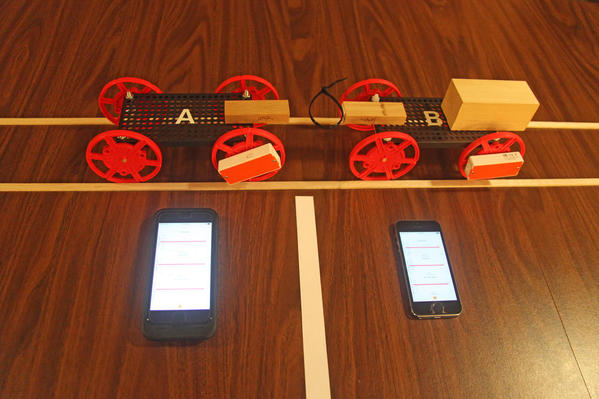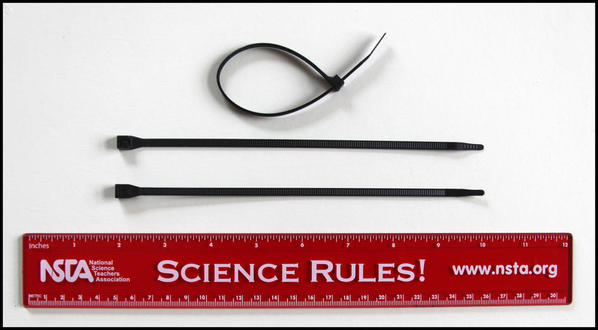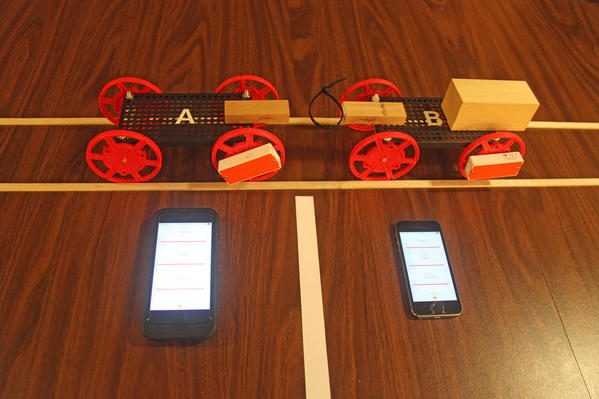Do you have two carts from the PocketLab Maker Kits? Do you have two PocketLabs? You probably have at least two students in your physics class with iPhones. Do they have the VelocityLap app installed on their iPhones? Then you have the major components for your students to investigate conservation of momentum when two carts on a track "explode".
As shown in the picture below, each cart has a PocketLab mounted on one of its wheels, so that the z-axis is the axis of interest when the carts are moving. You can only connect one PocketLab to an iPhone at time, thus the need for two iPhones, each running the VelocityLab app. The carts are shown in their zero positions at the center of a track on a table.

The track, made from a pair of rails with inside separation just a little larger than the axle of the carts, was constructed with thin balsa wood sticks. This helps to keep the carts on "the straight and narrow" as they move. The "explosion" is provided by a cable tie that is stuck (using thick double stick mounting tape) to one of the wood blocks that have been taped to each cart. The carts are pushed together, compressing the cable tie, and then released. The stored elastic potential energy of the cable tie provides the energy for the
"explosion", causing the two carts to move off in opposite directions.
The photo below shows a closeup of the cable ties. As can be seen from the NSTA ruler, they are about 8" long before looping the tie. The looped cable tie that was used in the momentum experiments is also shown in the photo.

The total momentum of the system is zero before the explosion. If momentum is conserved, we would expect it to be zero after the collision as well. The figure below shows the velocity graphs obtained from data from the VelocityLab app for both carts A (on the left) and B (on the right). These two graphs are really the only ones needed as they provide the velocity of the carts after the explosion. These two graphs will likely not be synced in time as it is quite difficult to start the VelocityLab apps on both iPhones at exactly the same time. But this is OK, as we only need to know the final velocities and not the time at which they occurred.

The mass of cart A is 0.159 kg. The mass of cart B, which has an extra wood block taped to the cart, is 0.223 kg. The most important data on the charts have been highlighted with a star. The graph shows that the velocity of cart A just after the explosion is -0.323 m/s. Therefore, its momentum = mv = -0.051 kg-m/s. Similarly, the graph shows that the velocity of cart B just after the explosion is 0.244 m/s, and has a momentum = pv = 0.054 kg-m/s. The sum of the final momenta is 0.003 kg-m/sec, very close to the initial zero momentum of the system before the explosion. We have good evidence that the law of conservation of momentum is conserved even in explosions! In explosions the vector sum of the exploded pieces is the same as the initial momentum of the system. It is certainly worth while to ask students to think of real world examples of such explosions.
Below is a video of a typical run of the experiment:

